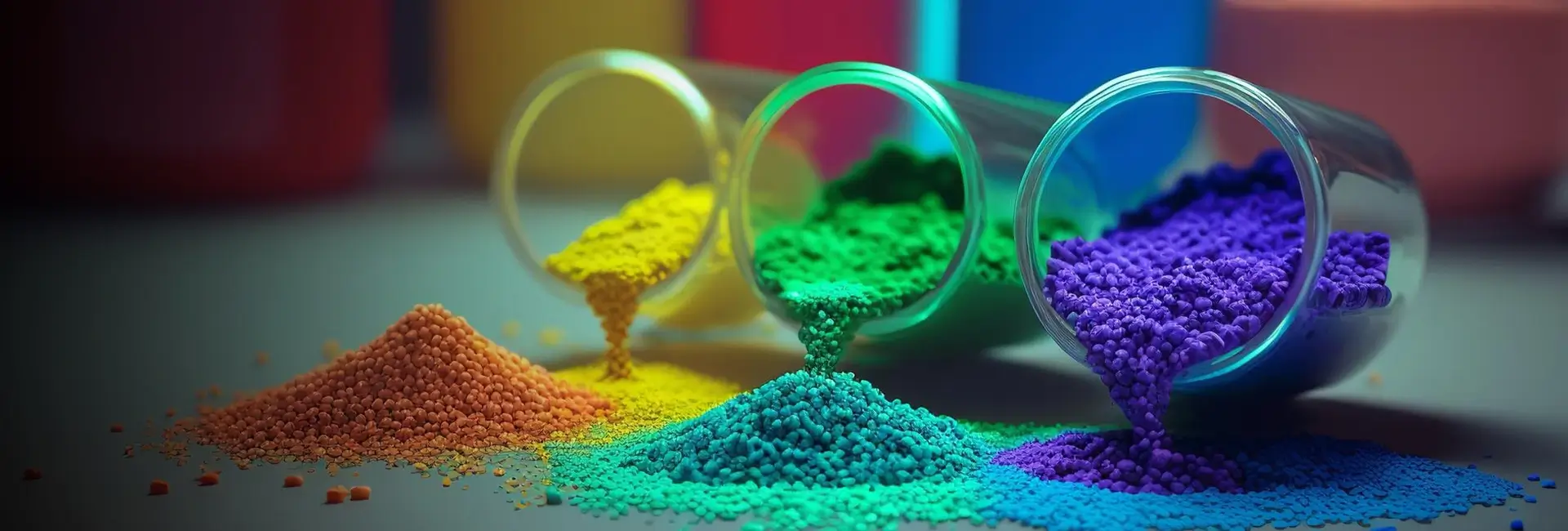Food Colours: A Vibrant Touch to Your Plate
Food is not just about taste it's a visual experience. From the rich red of strawberries to the golden hue of turmeric rice, colors play a vital role in how we perceive and enjoy food. Food colouring, both natural and synthetic, have become an integral part of the global food industry. They enhance appeal, indicate flavor, and even influence our appetite. In this blog post, we’ll dive deep into the world of food, their types, uses, regulations, and the rising trend of natural food col.
What Are Food Colours?
Food colours are substances either natural or synthetic added to food or drinks to change or enhance their color. They serve several purposes, such as:
-
Making food more visually appealing
-
Replacing color lost during processing or storage
-
Enhancing naturally occurring colors
-
Helping consumers identify flavors through visual cues
Whether it’s the bright yellow of a lemon drink or the red in candy, food colouring makes your food look appetizing and exciting.

Types of Food Colouring
Culinary food are broadly divided into two categories:
1. Natural Food
These are derived from natural sources such as plants, fruits, vegetables, and minerals. Common examples include:
-
Beta-carotene (from carrots) – Yellow to orange
-
Chlorophyll (from green plants) – Green
-
Beetroot red – Red to purple
-
Curcumin (from turmeric) – Yellow
-
Anthocyanins (from berries and grapes) – Red to blue
Advantages:
-
Perceived as healthier and safer
-
Eco-friendly and biodegradable
-
Suitable for clean-label products
Disadvantages:
-
Can be less stable (affected by heat, light, and pH)
-
Higher cost
-
Limited in intensity and variety
2. Synthetic Natural Colourants For Food
These are man-made and often derived from petroleum-based compounds. Common synthetic food dyes include:
-
Tartrazine (Yellow No. 5) – Bright yellow
-
Allura Red (Red 40) – Red
-
Brilliant Blue (Blue 1) – Blue
-
Sunset Yellow (Yellow 6) – Orange
Advantages:
Disadvantages:
-
Subject to health and safety concerns
-
Banned or restricted in some countries
-
May cause allergic reactions or hyperactivity in sensitive individuals

Applications of Artificial Food Dyes
Natural Edible colours are used across a wide range of industries:
1. Bakery and Confectionery
Cakes, candies, cookies, and pastries often feature vibrant colors to attract consumers and enhance visual appeal.
2. Beverages
Sodas, energy drinks, fruit juices, and syrups frequently include food coloring to denote flavors and freshness.
3. Dairy Products
Ice creams, flavored yogurts, and cheese use colours to enhance their look and differentiate flavors.
4. Processed Foods
Ready-to-eat meals, canned products, sauces, and snack foods rely on coloring agents to maintain consistency and appeal.
5. Pharmaceuticals and Cosmetics
Beyond food, these colors are also used in tablets, syrups, lipsticks, and lotions.
Regulatory Guidelines for Food
The use of food is strictly regulated by health and food safety authorities in most countries. Here are some notable regulatory bodies:
-
FDA (U.S. Food and Drug Administration) – Regulates both certified and exempt (natural) food colors in the United States.
-
EFSA (European Food Safety Authority) – Reviews and approves color additives for the European Union.
-
FSSAI (Food Safety and Standards Authority of India) – Governs the permissible food colors and their quantities in India.
-
Codex Alimentarius – Provides international standards under the FAO and WHO.
Key Regulations:
-
Maximum permissible limits are specified in ppm (parts per million).
-
Mandatory labeling of artificial colours is required.
-
Banned substances are listed and periodically updated based on new research.
Natural vs. Synthetic: What’s Better?
The growing preference for natural colours is driven by the clean-label movement, where consumers demand transparency, sustainability, and health-conscious choices. While synthetic colors offer cost efficiency and consistency, they often carry stigma and potential health concerns.
However, the decision between natural and synthetic often depends on the specific product application, budget, shelf-life requirements, and consumer expectations.
Read Also:
Blended Food Manufacturer in India
Food coloring
The Rise of Natural Colours
Several factors contribute to the rising popularity of natural :
1. Consumer Awareness
People are more informed and cautious about artificial additives. Labels like “no artificial colors” and “100% natural” are strong selling points blended colors.
2. Health and Wellness Trends
The global health movement is shifting demand towards clean, organic, and plant-based products.
3. Regulatory Pressure
Some artificial colours have been banned or restricted in specific markets, prompting manufacturers to switch to natural alternatives.
4. Technological Advances
Improvements in extraction, formulation, and stability of natural colours have made them more viable for commercial use.
Challenges in Using Natural Food
Despite their appeal, natural top food colour suppliers in India face several challenges:
-
Stability Issues: Natural colors can fade or change due to heat, light, or acidic conditions.
-
Cost and Sourcing: Natural extracts are typically more expensive and may have limited seasonal availability.
-
Color Range: The spectrum of colors available from natural sources is narrower compared to synthetic dyes.
However, ongoing research and innovation continue to improve the quality and performance of natural colorants.
Future Trends in Food
The future of top food colour suppliers in India is dynamic, shaped by health trends, technological progress, and consumer preferences. Key trends include:
-
Microencapsulation: Enhancing stability of natural colors through protective coatings.
-
Plant-based Extracts: Greater use of spirulina, purple carrots, butterfly pea flower, and more.
-
Smart Labels: Brands using labels like “plant-based colours” and “no synthetic additives.”
-
Sustainable Sourcing: Focus on eco-friendly and ethical harvesting of natural color sources.
-
Functional Colors: Combining color with health benefits (e.g., turmeric for anti-inflammatory properties).



